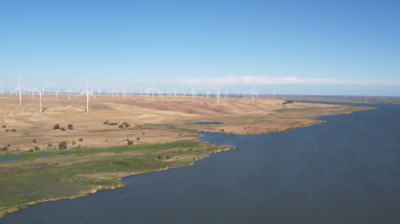BAY AREA COUNCIL CEO JIM WUNDERMAN NAMED BY GOV. BROWN TO SERVE ON REGIONAL WATER EMERGENCY TRANSPORTATION AUTHORITY
Bay Area Council President and CEO Jim Wunderman today (Aug. 31) was appointed by Gov. Jerry Brown to the Board of Directors of the Water Emergency Transportation Authority (WETA), which operates the Bay Area’s waterborne commute service that also functions as one of the region’s key transportation lifelines in times of natural disaster and other major emergencies.
“It’s time to push the throttle forward on a robust regional ferry system that can change the game in battling Bay Area congestion,” Wunderman said. “The Bay Area Council has long envisioned a muscular ferry system on par with other great systems around the world, like those in Washington, New York, Europe and Asia. I’m extremely excited to work with WETA Chair Jody Breckenridge and the rest of the Board in realizing the awesome power of our bay to move people and keep our economy moving in good times and in times of disaster.”
Under the leadership of former CEO Sunne Wright McPeak and Chair Ron Cowan, the Bay Area Council was instrumental in creating the Water Transit Authority (WTA), WETA’s predecessor, and then recasting the WTA into today’s SF Bay Ferry. The Council in recent months has been working closely with WETA and other business and transportation groups on ways to accelerate the expansion of ferry service, including between the East Bay and San Francisco and new routes linking the booming Silicon Valley with the rest of the region.
A growing population, a sizzling economy and no money or space for new highways and bridges have produced a perfect storm of congestion on the region’s bridges, roads and highways, Wunderman said. Even vaunted land-based mass transit systems like BART and Caltrain are overwhelmed and struggling to keep up with even basic maintenance.
The 10-year anniversary last week of Hurricane Katrina also served as a sobering reminder of the need for strong, well-integrated and regular emergency ferry service. A recent report by the Bay Area Council Economic Institute highlighted the Bay Area’s vulnerability in this time of climate change and sea-level rise to extreme storms, and found that an overdue mega storm could cripple large swaths of the region’s transportation system. A separate Economic Institute study found similar vulnerabilities from an earthquake.
The Bay Area was once heavily reliant on ferry service. Wunderman noted that at their peak service in the mid-1930s, a fleet of 50 ferries shuttled an estimated 50-60 million passengers across the bay each year. Restoring a greater portion of that service would be a game changer in battling Bay Area congestion, he said.
“The time is now,” Wunderman said. “Demand for ferries is enjoying steady growth. Ridership on WETA ferries rose from 1.4 million in 2012 to more than 2.14 million in the past fiscal year, an almost 53 percent increase. WETA is to be commended for its recent move to increase service in response to rising demand. More must be done and more can be done.”
Key Milestones in the Bay Area Council’s History with Regional Ferry Service
- In 1997, the California State Senate approved Senate Resolution 19 (Barbara Lee), calling on the Bay Area Council and the Bay Area Economic Forum to convene a Blue Ribbon Task Force to study the feasibility of expanding water transit in the Bay Area.
- In 1999, the Blue Ribbon Task Force released its report, recommending the creation of a regional agency with a mandate to create a regional ferry system with 28 terminals, 20 routes, 75 vessels, carrying 15 to 20 million passengers per year. At the time, the Bay Area had six ferry routes with 3.5 million annual riders.
- In 1999, the California Legislature enacted SB428 (Don Perata) creating the Water Transit Authority, based on the model proposed by the Bay Area Council.
- In 2006, on the heels of Hurricane Katrina, the Council recognized the need for a higher priority attention on water transit emergency response, and convened a new Blue Ribbon Task Force which recommended that WTA be transformed into WETA, with a dual mandate: transportation and emergency response.
- In response, the Legislature enacted SB976 (Tom Torlakson) that recast the WTA into WETA, following the model proposed by the Bay Area Council.
- At the Council’s urging, then-Senator Perata included $250 million in Proposition 1B in 2006 for emergency response capital funding.
- In 2014, with commute challenges rising to the level of a competitive issue for the Bay Area, the Council reactivated its Water Transit Committee in order to organize and engage employers, land developers, investors, and other private companies for a collaborative effort with WETA to expand ferry operations.





